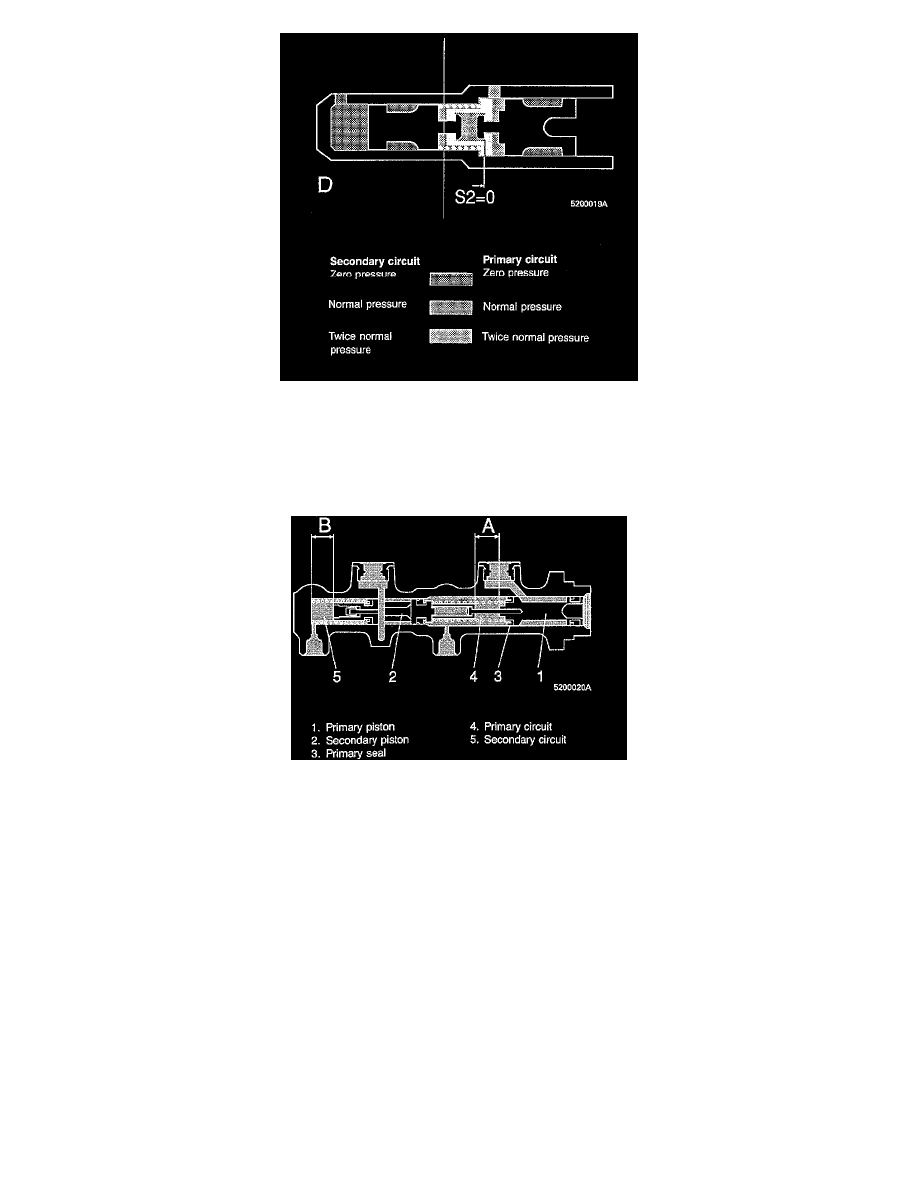940 L4-2.3L SOHC VIN 88 B230F (1992)

Picture D. If a leakage occurs in the secondary circuit, the secondary piston will be displaced by pressure from the primary piston. The interconnecting
sleeve will limit the displacement to a value equivalent to S2 = 0, following which the pistons will move together under the action of the sleeve. In this
case also, the braking pressure will be twice the normal value, since the actual pressure area is only half of the normal value (the difference between
the primary and secondary piston areas).
Master cylinder on cars from 1992 on, with or without ABS
The master cylinder is of the tandem type. When the brakes are applied, the primary piston (1) is displaced towards the secondary piston (2). Fluid
pressure is developed in the primary circuit (4) when the primary seal (3) passes the equalizing port, causing the secondary piston (2) to increase the
pressure in the secondary circuit (5).
In the event of failure of the primary circuit (4), the secondary piston (2) will not be subjected to pressure until the pushrod (1 ) has traversed the
distance (A). This will causes a loss in pedal travel corresponding to distance (A) times the pedal ratio.
In the event of failure of the secondary circuit (5), both the primary (1) and the secondary pistons (2) will travel distance (B) before pressure can be
developed in the primary circuit (4). This will cause a loss in pedal travel corresponding to distance (B) times the pedal ratio.
